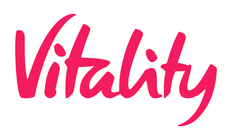
Vitality life insurance review
Health and life insurance specialist Vitality rewards customers who stay active and healthy with cashback, discounts and regular "treats". But are its life insurance options right for you?



Whether you’re looking to make sure you’ll be able to repay your mortgage if you’re diagnosed with a serious illness or want to make sure your family is provided for if the worst happens to you, it can be hard to know what kind of insurance you should get.
We’ve analysed Vitality’s full life insurance range to help you decide if it’s the right provider to give you peace of mind.
Vitality is owned by Discovery Holdings, a global insurer with over 4.4 million clients. It takes a fairly unique approach to health and life insurance based on behavioural economics.
The idea is that, by encouraging its customers to shift a few stubborn pounds and by rewarding them for doing so, it promotes healthy long-term habits that result in fewer health claims.
Previously known as PruHealth, the Vitality brand launched in 2014 with two trading names: VitalityHealth and VitalityLife.
Vitality’s life insurance products pay out a lump sum if you die or are diagnosed with a serious or terminal illness, which could help protect your loved ones if the worst happens to you.
With some plans, you can add on one of Vitality’s “optimisers” – the Vitality Optimiser or the Wellness Optimiser – for an additional fee. Depending on the optimiser and your plan, these provide benefits such as discounts on your initial and subsequent premiums, rewards for being active and cashback.
With all of its products, you can choose between level, indexed and decreasing cover.
Level cover is where both your monthly payments and the cover amount stay the same over time.
Indexed cover is where the cover amount increases in line with inflation (RPI), up to a maximum of 10% per year. Your premium also increases in line with inflation, plus an additional amount that depends on the level of inflation.
Decreasing cover is where your payments stay the same but the level of cover decreases over time.
Vitality’s term life insurance covers you for a fixed amount of time, from five to seventy years, and can help with repaying the mortgage and other known debts.
You can buy it as a standalone policy or add Vitality’s serious illness cover to the policy.
Vitality’s whole of life cover works in the same way as its term life insurance, except that there’s no fixed end date – it’ll last until you die, provided you keep paying your premiums. You can buy it as a standalone policy or add Vitality’s serious illness cover to the policy.
For an extra fee, you can also add on “Lifestyle care cover”. This lets you claim some or all of your cover if you can no longer look after yourself due to degenerative illnesses like dementia, Parkinson’s, Alzheimer’s or stroke.
This is a form of term life insurance specifically aimed at repaying your mortgage. Vitality Mortgage Life Insurance starts when you complete your house purchase and ends when you pay off your mortgage. The level of cover should reflect how much it’ll cost for you to repay the mortgage.
The policy automatically includes “Mortgage Free Cover”, which covers you for up to three months between Vitality giving you an acceptance letter and the start of your mortgage or life insurance plan – whichever starts earlier.
Vitality deliberately names its cover “serious” rather than “critical” illness cover, and the company points out that (according to an analysis by Defaqto), it includes more conditions than any other provider on the market. And it does seem to stack up; its Comprehensive policy covers you for 178 conditions, and its Primary policy covers you for 145 conditions.
The way it pays out also works a bit differently from other critical illness policies. Whereas most pay out in full for the majority of conditions, and a much lower amount for a handful of additional ones, Vitality Serious Illness Cover pays out on a severity basis. Its minimum payment is 5% of cover, and the maximum is 100%. If you don’t receive the full payment, you (or your partner, if you have joint cover) can use the remainder for future serious illnesses.
Children are also covered for core conditions in your policy up to £25,000 or 50% of your cover, whichever is lower.
Optional add-ons include the following:
The specific exclusions will depend on which type of cover you take out, so you’ll need to check the Vitality policy documents carefully, but the following are some key exclusions:
You can claim by phone (0345 601 0072) or by email (lifeclaims@vitality.co.uk). Having relevant information (such as policy details, doctors’ contact details or proof of death) will help the process go more smoothly.
Vitality received a highly commended award for the life insurance category in the Finder Customer Satisfaction Awards in 2024, with 89% of customers saying they’d recommend the service to a friend. Feedback included praise for its service and benefits, with many customers noting the rewards as a highlight.
One customer commented: “I love Vitality and the products and benefits it offers, it meets my lifestyle.”
Not all comments were totally positive. Another customer said: “I do like Vitality but I think they could provide more awards and also change up the rewards monthly so it’s not always Caffè Nero points as I don’t have a Caffè Nero near me!”
Finder scores, in blue, are based on our expert analysis. We also show reviews from users, where we've received more than 10, with a score in yellow. We gather more reviews from customers every year in Finder's customer satisfaction survey.
To find out more, read our full methodology.
Hargreaves Lansdown and Moneybox are both investment platforms with a lot to offer. We compare their features, fees, account types and more – side by side in Moneybox vs Hargreaves Lansdown (HL).
Free money might sound too good to be true, but there are many ways you can get your hands on some extra cash.
Hargreaves Lansdown and Moneyfarm are both investment platforms with a lot to offer. We compare their features, fees, account types and more – side by side in Moneyfarm vs Hargreaves Lansdown (HL).
Freetrade and Vanguard are both investment platforms with a lot to offer. We compare their features, fees, account types and more – side by side in Vanguard vs Freetrade.
If your child is aged between 6 and 18, the Bex card could be the first step to giving them some financial freedom.
Trading 212 and XTB are both investment platforms with a lot to offer. We compare their features, fees, account types and more – side by side XTB vs Trading 212.
Trading 212 and Moneybox are both investment platforms with a lot to offer. We compare their features, fees, account types and more – side by side in Moneybox vs Trading 212.
Trading 212 and InvestEngine are both investment platforms with a lot to offer. We compare their features, fees, account types and more – side by side in InvestEngine vs Trading 212.
Find out how to spot some of the best day trading stocks available in the UK and abroad, along with tips for managing your investment portfolio on a day-to-day basis.
Vanguard and Wealthify are both investment platforms with a lot to offer. We compare their fees, features, account types and more – side by side in Wealthify vs Vanguard.